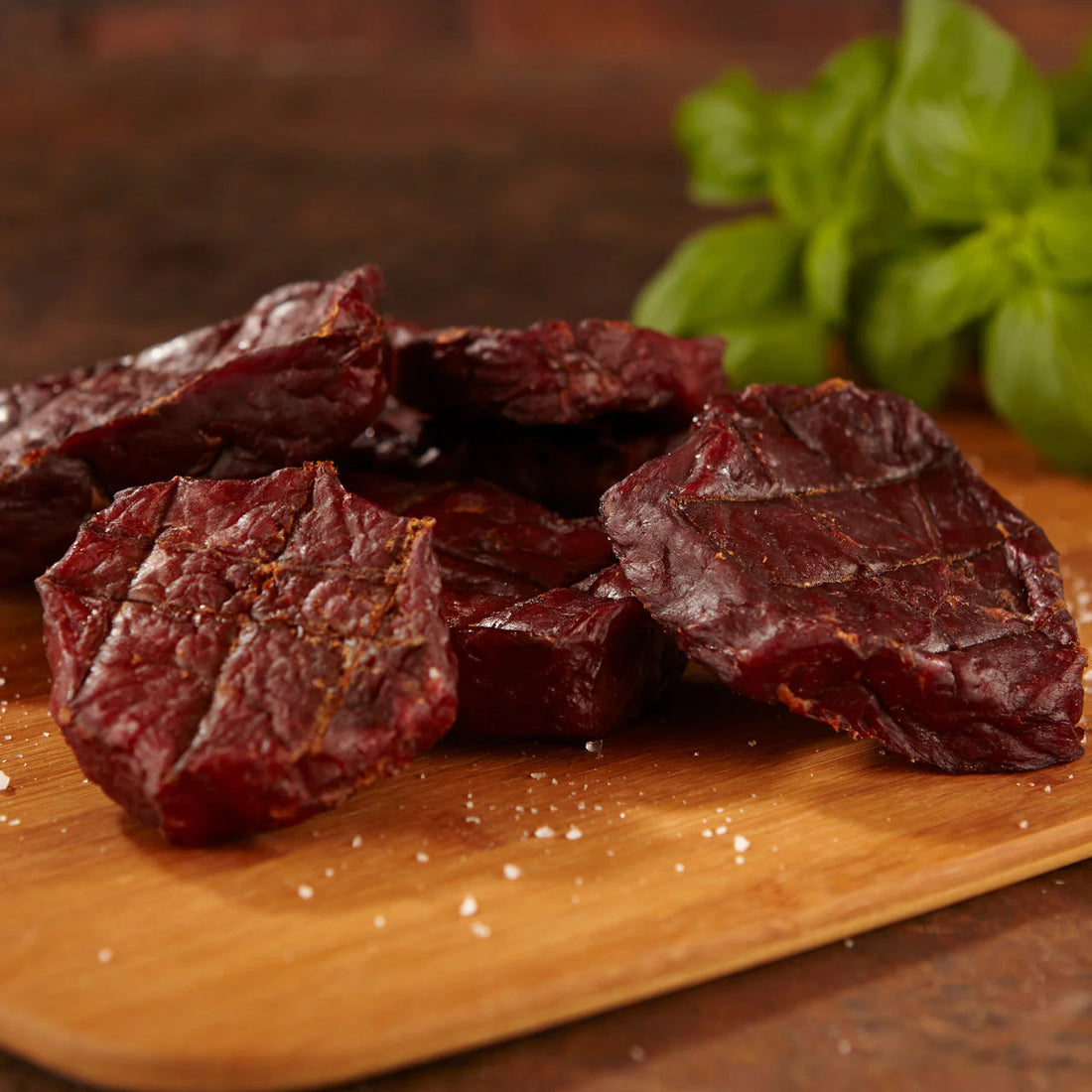
Unveiling the Origins: The Journey of Beef Jerky
Chad MathewsShare
Ancient Preservation Techniques
Ancient preservation techniques have played a crucial role in the development of food storage methods, particularly in the creation of beef jerky. The indigenous people of Peru utilized a method called Ch'arki, which translates to "burning meat" in Quechua. This technique, dating back to the 1550s, involved sun-drying and smoking meat, laying the groundwork for modern jerky-making practices.
Similarly, the Ancient Egyptians demonstrated remarkable ingenuity in food preservation, using sun-drying methods to keep various meats and produce edible for extended periods. Their efforts resulted in well-preserved food found in tombs, showcasing the importance of preservation in their culture.
As these ancient techniques evolved, they influenced the methods used by early American cowboys, who relied on jerky as a lightweight, high-protein snack during long cattle drives.
Historical Roots in Egypt
The historical roots of food preservation can be traced back to ancient civilizations, particularly in Egypt. The Egyptians mastered the art of drying and salting meats, ensuring their sustenance lasted through harsh conditions. This technique laid the groundwork for future preservation methods.
Archaeological findings reveal that the Egyptians utilized sun-drying to preserve various foods, including meats and fruits. Their understanding of food preservation was crucial for survival, especially in a climate where fresh produce could be scarce. This ingenuity reflects their advanced agricultural practices.
As time progressed, the techniques developed by the Egyptians influenced other cultures, leading to the evolution of preserved meats. The methods they pioneered were essential for long journeys and military campaigns, ensuring that food remained safe and nutritious over extended periods.
The legacy of ancient Egyptian preservation techniques can still be seen today in modern practices. While technology has advanced, the fundamental principles of drying and salting meats remain relevant, showcasing the enduring impact of these early innovations on contemporary food preservation.
Cowboy Culture and Jerky
Cowboy culture and beef jerky are deeply intertwined, reflecting the rugged lifestyle of the American West. In the 1820s, cowboys relied on jerky as a vital source of sustenance during long cattle drives. This lightweight, high-protein snack was essential for maintaining energy and nutrition, showcasing the resourcefulness of these early pioneers who adapted ancient preservation methods to their needs.
The origins of beef jerky can be traced back to ancient practices, such as the Incan technique of Ch'arki, which means "burning meat" in Quechua. This method of sun-drying and smoking meat laid the groundwork for modern jerky. As the practice spread, it evolved through various cultures, ultimately becoming a staple for cowboys and soldiers alike, who appreciated its long shelf life and portability during arduous journeys.
Today, beef jerky has transformed into a beloved snack enjoyed by many. With a growing demand for artisanal, small-batch options, brands like Natural State Jerky are leading the charge in providing high-quality jerky made from natural ingredients. This evolution not only honors the rich history of jerky but also caters to modern consumers seeking healthier, flavorful snacks that reflect their values and lifestyle.
Civil War and Jerky's Popularity
During the Civil War, beef jerky emerged as a vital food source for soldiers on both sides, providing essential protein and energy during long marches. Its long shelf-life and lightweight nature made it an ideal choice for troops, who relied on this convenient snack to sustain them through challenging conditions. Jerky's popularity soared, solidifying its place in American culinary history.
Post-war, beef jerky continued to thrive as a staple for travelers and outdoor enthusiasts, becoming widely available in general stores. The evolution of food preservation techniques in the 1900s further propelled its production, making jerky accessible to a broader audience.
Today, artisanal brands like Natural State Jerky honor traditional methods while offering innovative flavors, ensuring that beef jerky remains a beloved snack for generations.
Industrial Revolution Impact
The Industrial Revolution significantly transformed food production, including the methods used to create beef jerky. Advancements in technology allowed for mass production, making jerky more accessible and affordable. However, this shift also led to concerns over quality, prompting a resurgence in small-batch, artisanal jerky crafted with natural ingredients. Today, consumers seek healthier, flavorful options that honor traditional preservation techniques.Modern Flavor Innovations
Modern flavor innovations in beef jerky have transformed this age-old snack into a gourmet experience. Today’s jerky enthusiasts can indulge in a variety of unique flavors, from sweet honey and spicy habanero to bold chipotle bourbon. This evolution caters to adventurous palates while maintaining the nutritional benefits that make jerky a popular choice for health-conscious consumers seeking high-protein, low-fat snacks.
As the demand for artisanal, small-batch jerky grows, brands like Natural State Jerky are leading the charge with their commitment to quality and sustainability. By using premium cuts of meat and all-natural ingredients, they ensure that each bite is packed with flavor and goodness. This focus on innovation and tradition promises a bright future for beef jerky, appealing to both new and loyal fans alike.
Nutritional Benefits of Jerky
Beef jerky is not only a flavorful snack but also a powerhouse of nutrition. Packed with protein, a typical serving contains around 9-10 grams, making it an excellent choice for those seeking a quick energy boost. Its low-fat and low-calorie profile further enhances its appeal, allowing health-conscious consumers to indulge without guilt.
The nutritional benefits of jerky extend beyond protein content. It is rich in essential vitamins and minerals, including iron and zinc, which are vital for maintaining energy levels and supporting immune function. Additionally, the drying process used in jerky production helps preserve these nutrients, making it a convenient option for on-the-go snacking without sacrificing health benefits.
As the demand for healthier snacks rises, many brands are shifting towards artisanal, small-batch jerky made from high-quality, natural ingredients. This trend not only ensures superior taste but also aligns with consumers' growing preference for sustainable and organic options. With innovative flavors and diverse meat sources, jerky continues to evolve, offering a nutritious and delicious snack for all.
